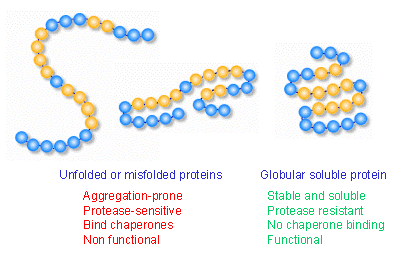

To this end, the study of extreme phenotypes affords fascinating insights into the trade-offs of protein homeostasis underlying organismal fitness. Together with their individual functional specializations, the ensemble of chaperones in the cell provides a powerful network to control the quality of proteins. Hsp60s encode subunits of eukaryotic chaperonins, which are heteromeric protein complexes that provide a fully enclosed protective cavity for the folding of select proteins ( 16, 17). Small heat-shock proteins (sHsp or Hsp20) stabilize partially denatured proteins and prevent their aggregation ( 14), while enzymes from the Hsp100 chaperone family are primarily involved in disaggregation and proteolysis of proteins ( 15). Hsp40 chaperones primarily act as cochaperones and nucleotide exchange factors to Hsp70s, providing specificity in guiding protein folding, (dis)assembly, and translocation ( 12, 13). The family of Hsp70s comprises key enzymes involved in de novo folding, thus determining the fate of newly made proteins ( 10, 11).

They are usually encoded by only a few genes ( 8) that are strongly activated under unfavorable conditions ( 9). Hsp90-type chaperones are the main stress responders that stabilize and refold stress-denatured proteins ( 6, 7). 50 to 300 different chaperone genes that classify into distinct families based on the structure and function of the encoded proteins. Our results thus indicate that the balance in protein homeostasis may be a key variable in explaining organismal robustness.Įukaryotic genomes often contain more than ca. Strikingly, the relative size of chaperone networks is found to generally correlate with longevity in Metazoa. Northobranchius furzeri, the shortest-lived vertebrate and a widely used model for fragile protein homeostasis, is found to be chaperone limited while Heterocephalus glaber as the longest-lived rodent and thus an especially robust organism is characterized by above-average numbers of chaperones. Organisms with pronounced phenotypes clearly buck this trend. Expanding a previous study of 16 eukaryotes to the quantitative analysis of 216 eukaryotic genomes, we find a strong correlation between the composition of eukaryotic chaperone networks and genome complexity that is distinct for different species kingdoms. Here, using a comparative genomics approach we report general principles of maintaining protein homeostasis across the eukaryotic tree of life. However, it is not clear what tips the balance of protein homeostasis and leads to onset of aging and diseases. Failure and decline of protein homeostasis are directly associated with conditions of aging and aging-related neurodegeneration. At the heart of this regulatory system lies a class of specialized protein quality control enzymes called chaperones that are tasked with assisting proteins in their folding, avoiding aggregation and degradation.

An elaborate regulatory system within cells, the protein homeostasis network, safeguards that proteins are correctly folded and functional. Maintaining protein homeostasis is an essential requirement for cell and organismal viability.


 0 kommentar(er)
0 kommentar(er)
